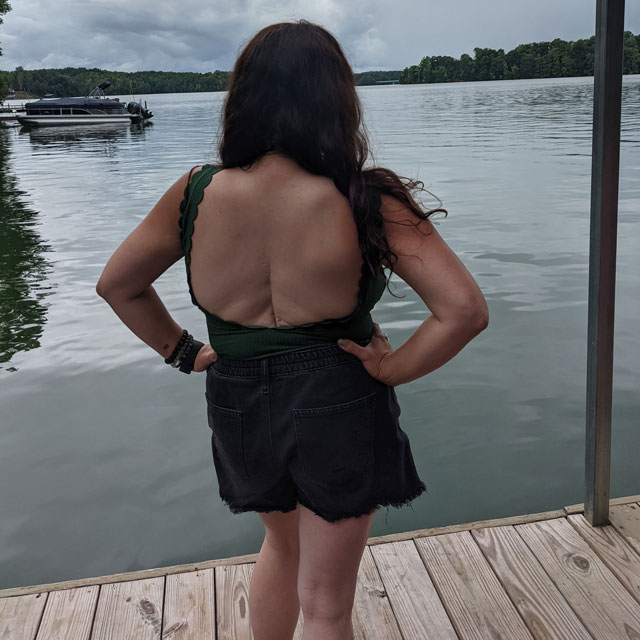Spina Bifida is the most common neural tube defect, affecting 1 out of 2,758 births in the U.S each year.
I was born with Spina Bifida.
It is often referred to as the snowflake condition because it affects each person so differently. And, my journey is unique to me.
Growing up, most people didn’t know about my condition. I have full function of my legs, so from the outside, my difference wasn’t initially apparent. For the majority of my life because my journey didn’t look like others with my condition, I didn’t think I could tell my story. So I mostly kept it to myself.
That choice was justified when I was applying for scholarships. I asked about applying for ones related to Spina Bifida. My counselor looked me right in the eyes and said, “Your condition isn’t bad enough.” I will never forget that moment. Whether right or wrong, her words reminded me exactly why I had kept my condition to myself. It didn’t fit with what was expected, so it wasn’t valid.
My path
Spina Bifida is a type of neural tube defect in which a baby’s neural tube fails to develop or close properly – the literal meaning for Spina Bifida is “split spine” – and the effects can range from mild to severe. As a child, I experienced chronic, painful urinary tract infections as well as chronic back and leg pain. I also dealt with the emotional and mental effects of having chronic illness and pain.
My Spina Bifida was treated at Vanderbilt University Medical Center. Initially, a surgery closed the neural tube. Later I’ve had ongoing treatment there for other related conditions.
I never let Spina Bifida or its effects hold me back though. My parents didn’t let it hold me back either. When I was born, my parents didn’t know that I was going to have Spina Bifida. They didn’t have time to prepare, which maybe was a blessing. They didn’t have any preconceived notion of what my life would look like. They just let it take form.
Though, I can only imagine the thoughts that ran through their minds when I declared I wanted to take gymnastics classes in elementary school. Still, they never discouraged my craziest dreams. That crazy dream led to a shining moment in my life where I completed a round off and six consecutive back handsprings across the gym floor during a gymnastics program in fourth grade. I will never forget the pride and love I felt for myself and my body in that moment. They always gave me space to carve my own path, and I always have.
A sense of belonging
Throughout my life, I have connected with so many wonderful people who were born with birth defects. Every story is different but carries a similar sentiment. We are all grateful for our blessings, and yet, we want to be able to own the hardships and the scars. We want to belong, and we want to learn to accept our unique stories.

I am sharing my story now because I think it is important to hear that you are not alone. I felt alone for much of my life, living somewhere between appearing “normal” to the world and carrying a hidden scar on my back. The first time I met someone whose journey was similar to mine, I felt a sense of belonging that I had never felt in my life. I don’t want anyone to go that journey alone.
Even more important than belonging is being able to accept yourself and your story, just as you are. For a long time, I thought that because my journey didn’t look exactly like others that I didn’t get to own my story. I now know that I can be both grateful for my journey while also owning the hardships and scars that came as part of my journey. Both are valid. Both are important.
Heather Russ Duggin is a Communications Specialist at Vanderbilt University Medical Center. Outside of work, she likes to write, read, paint, travel and hang in the hammock. She is currently training to run her first 5K.

The Spina Bifida Clinic at Monroe Carell Jr. Children’s Hospital at Vanderbilt has more than 40 years of experience treating babies with this condition. We are known around the world for pioneering prenatal Spina Bifida surgery. Other babies at Children’s Hospital are treated for this condition after birth.

